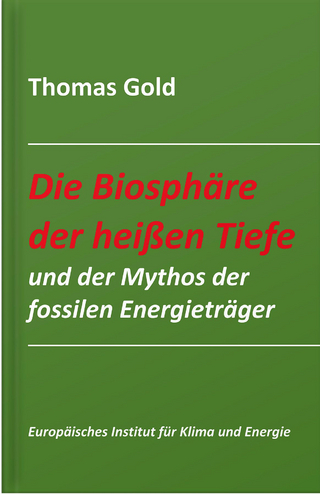
Introduction to Experimental Biophysics
Crc Press Inc (Verlag)
978-1-4987-9959-1 (ISBN)
Praise for the First Edition
“essential reading for any physical scientist who is interested in performing biological research.” ―Contemporary Physics
"an ambitious text…. Each chapter contains protocols and the conceptual reasoning behind them, which is often useful to physicists performing biological experiments for the first time." –Physics Today
This fully updated and expanded text is the best starting point for any student or researcher in the physical sciences to gain firm grounding in the techniques employed in molecular biophysics and quantitative biology. It includes brand new chapters on gene expression techniques, advanced techniques in biological light microscopy (super-resolution, two-photon, and fluorescence lifetime imaging), holography, and gold nanoparticles used in medicine. The author shares invaluable practical tips and insider’s knowledge to simplify potentially confusing techniques. The reader is guided through easy-to-follow examples carried out from start to finish with practical tips and insider’s knowledge. The emphasis is on building comfort with getting hands "wet" with basic methods and finally understanding when and how to apply or adapt them to address different questions.
Jay L. Nadeau is a scientific researcher and head of the Biomedical Engineering in Advanced Applications of Quantum, Oscillatory, and Nanotechnological Systems (BEAAQONS) lab at Caltech and was previously associate professor of biomedical engineering and physics at McGill University.
Jay L. Nadeau is an associate professor of physics at Portland State University. She was previously a research professor of medical engineering at Caltech (2015-2017) and associate professor of biomedical engineering and physics at McGill University (2004-2015). Her research interests include nanoparticles, fluorescence imaging, and development of instrumentation for the detection of life elsewhere in the solar system. She has published over 70 papers on topics ranging from theoretical condensed matter physics to experimental neurobiology to the development of anticancer drugs and, in the process, has used almost every technique described in this book. Her work has been featured in New Scientist, Highlights in Chemical Biology, Radio Canada’s Les Années Lumière, Le Guide des Tendances, and in educational displays in schools and museums. Her research group features chemists, microbiologists, roboticists, physicists, and physician-scientists, all learning from each other and hoping to speak each other’s language. A believer in bringing biology to physicists as well as physics to biologists, she has created two graduate-level courses: methods in molecular biology for physical scientists and mathematical cellular physiology. She has also taught pharmacology in the medical school and was one of the pioneers in the establishment of multiple mini-interviews for medical school admission. She retains an adjunct position at McGill, and has collaborators in industry and academia in the United States, Europe, Australia, and Japan. She has given several dozen invited talks at meetings of the American Chemical Society, American Geophysical Union, the International Society for Optics and Photonics (SPIE), the Committee on Space Research, the American Association of Physics Teachers (AAPT), and many others. Before McGill, she was a member of the Jet Propulsion Laboratory’s Center for Life Detection, and previous to that a Burroughs-Wellcome postdoctoral scholar in the laboratory of Henry A. Lester at Caltech. She received her PhD in physics from the University of Minnesota in 1996.
Series Preface
Preface
Acknowledgments
Author
Contributors
Chapter 1 Introduction and Background
Chapter 2 Basic Molecular Cloning of DNA and RNA
Chapter 3 Expression of Genes in Bacteria, Yeast, and Cultured Mammalian Cells
Chapter 4 Advanced Topics in Molecular Biology
Chapter 5 Protein Expression Methods
Joshua A. Maurer
Chapter 6 Protein Crystallization
Oliver M. Baettig and Albert M. Berghuis
Chapter 7 Introduction to Biological Light Microscopy
Coauthored with Michael W. Davidson
Chapter 8 Advanced Light Microscopy Techniques
Coauthored with Lina Carlini
Chapter 9 Advanced Topics in Microscopy II: Holographic Microscopy
Coauthored with Manuel Bedrossian
Chapter 10 Quantitative Cell Culture Techniques
Chapter 11 Semiconductor Nanoparticles (Quantum Dots)
Chapter 12 Gold Nanoparticles
Edward S. Allgeyer, Gary Craig, Sanjeev Kumar Kandpal, Jeremy Grant, and Michael D. Mason
Chapter 13 Advanced Topics in Gold Nanoparticles: Biomedical Applications
Chapter 14 Surface Functionalization Techniques
Chapter 15 Electrophysiology
Coauthored with Christian A. Lindensmith and Thomas Knöpfel
Chapter 16 Spectroscopy Tools and Techniques
Chapter 17 Introduction to Nanofabrication
Orad Reshef
Glossary
Appendix A: Common Solutions
Appendix B: Common Media
Appendix C: Restriction Endonucleases
Appendix D: Common Enzymes
Appendix E: Fluorescent Dyes and Quenchers
Appendix F: Fluorescent Proteins
Index
| Erscheinungsdatum | 02.12.2017 |
|---|---|
| Zusatzinfo | 41 Tables, black and white; 141 Illustrations, black and white |
| Verlagsort | Bosa Roca |
| Sprache | englisch |
| Maße | 203 x 254 mm |
| Gewicht | 1882 g |
| Themenwelt | Medizin / Pharmazie |
| Naturwissenschaften ► Biologie ► Biochemie | |
| Naturwissenschaften ► Physik / Astronomie ► Angewandte Physik | |
| ISBN-10 | 1-4987-9959-0 / 1498799590 |
| ISBN-13 | 978-1-4987-9959-1 / 9781498799591 |
| Zustand | Neuware |
| Haben Sie eine Frage zum Produkt? |
aus dem Bereich


